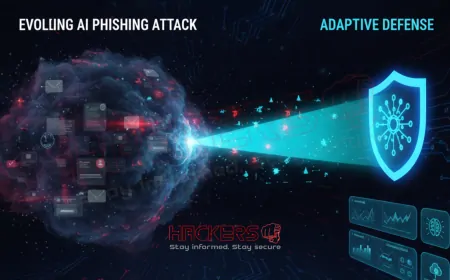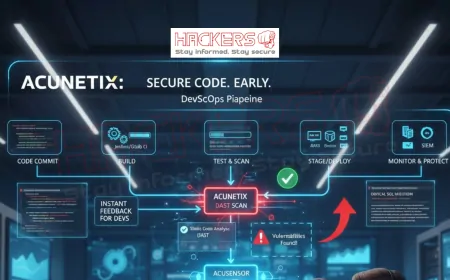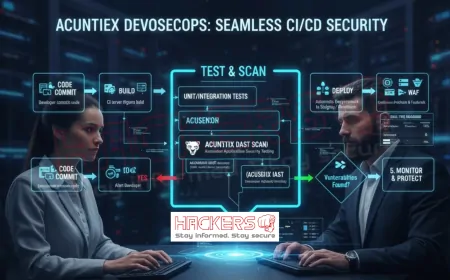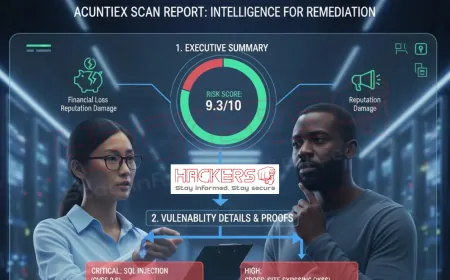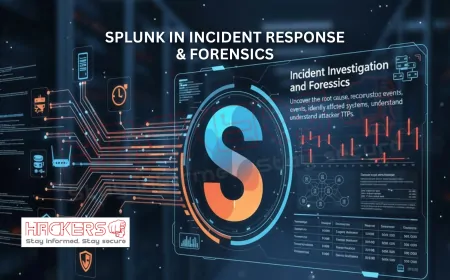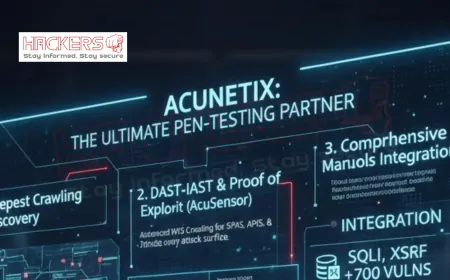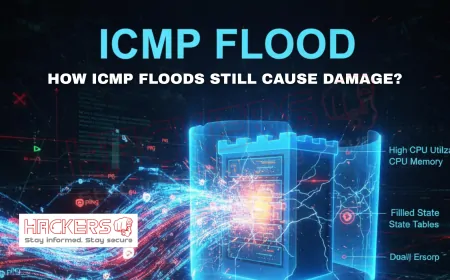What Makes Acunetix Different from Other Web Scanners?
Last week our CTO asked a simple question during the sprint review: "Why do we pay for Acunetix when OWASP ZAP is free?" I opened two browser tabs. One showed ZAP churning for six hours on our React dashboard and missing half the endpoints. The other showed Acunetix finishing the same job in twenty-two minutes with a clean PDF ready for the board. The room went quiet. That moment sums up why Acunetix stands alone in a crowded market of web vulnerability scanners. This guide walks you through the ten real-world differences that matter to developers, security analysts, and CISOs in Pune and beyond. No marketing fluff. Just facts, screenshots in your mind, and a comparison table you can print and stick on the wall. By the end, you will know exactly why teams switch to Acunetix and never look back.
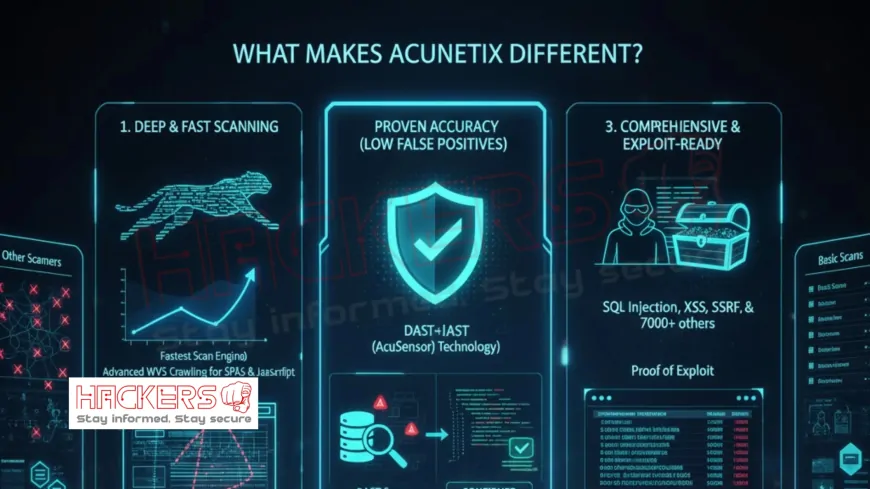
Table of Contents
- The "Free vs Paid" Myth
- 1. Crawling That Actually Works
- 2. False Positives Under 2 Percent
- 3. One-Click Login Automation
- 4. API Testing Without Tears
- 5. Reports That Get Read
- 6. CI/CD That Fails Fast
- 7. Speed Without Sacrificing Depth
- 8. Support That Answers in Hours
- 9. Continuous Signature Updates
- 10. Pricing That Scales Fairly
- Side-by-Side Comparison Table
The "Free vs Paid" Myth
Free tools like ZAP and Nikto are fantastic for learning. They teach you how HTTP works and what XSS looks like. But when your job depends on shipping secure code every sprint, you need a tool that works while you sleep. Acunetix is that tool.
1. Crawling That Actually Works
Most scanners treat modern web apps like static HTML from 2005. Acunetix launches a full Chrome engine under the hood.
- Renders React hooks, Vue reactivity, and Angular change detection.
- Executes lazy-loaded modules and waits for network idle.
- Discovers endpoints hidden behind WebSocket auth handshakes.
- Follows JSON responses that build navigation menus dynamically.
2. False Positives Under 2 Percent
A scanner that cries wolf every five minutes gets ignored. Acunetix verifies every finding with a safe proof-of-concept.
- SQL injection: forces a time delay and measures response difference.
- XSS: injects a unique token and checks if it renders in DOM.
- SSRF: pings Acunetix-owned callback domain to confirm reachability.
- Engine learns from your "Mark as False" clicks and improves over time.
3. One-Click Login Automation
Other tools make you script Selenium or write complex session handlers. Acunetix records your browser once.
- Click "Record Login" and log in normally, even with OTP via SMS.
- Acunetix extracts cookies, tokens, and CSRF values automatically.
- Replays the flow for every scan, including password changes.
- Supports OAuth2, SAML, Kerberos, and NTLM out of the box.
4. API Testing Without Tears
Drop an OpenAPI file or Postman collection. Acunetix parses it and starts fuzzing immediately.
- Mutates JWT claims, GraphQL variables, and XML bodies.
- Detects BOLA by swapping IDs across authenticated users.
- Validates rate-limit headers and CAPTCHA responses in real time.
- Generates curl commands for developers to reproduce instantly.
5. Reports That Get Read
Security reports usually collect dust. Acunetix produces three versions in one click.
- Executive: two-page PDF with risk heatmap and business impact.
- Developer: line-by-line payload, HTTP request/response, and fix snippet.
- Compliance: pre-filled PCI DSS, HIPAA, and ISO 27001 checklists.
- Custom branding: add your Pune startup logo and color scheme.
6. CI/CD That Fails Fast
One line in your GitHub Actions YAML breaks the build on critical issues.
- Exit code 1 on High/Critical, 0 on clean or low severity.
- Posts inline comments on pull requests with exact file and line.
- Integrates with Jira, Slack, and Microsoft Teams natively.
- Zero configuration for Jenkins, GitLab, and Azure Pipelines.
7. Speed Without Sacrificing Depth
Acunetix finishes a 500-page app in under thirty minutes. How?
- Passive analysis during crawl: no extra traffic.
- Smart throttling: respects your server’s robots.txt and rate limits.
- Parallel attack modules: SQLi, XSS, and LFI run simultaneously.
- Cloud bursting: spins up scanners in AWS Mumbai when you need scale.
8. Support That Answers in Hours
File a ticket at 2 AM. Get a human reply by 9 AM IST, often with a custom script.
- Dedicated Slack channel for enterprise customers.
- Weekly vulnerability deep-dive webinars with the Malta R&D team.
- Free health checks for on-prem installations in Pune data centers.
- Direct access to the product manager on LinkedIn.
9. Continuous Signature Updates
New zero-day drops? Acunetix pushes a check within 48 hours.
- Daily CVE feed integration from NIST and MITRE.
- Community-submitted payloads vetted by senior analysts.
- One-click update: no downtime, no restart required.
- Version lock for compliance teams who need audit trails.
10. Pricing That Scales Fairly
No per-scan or per-page nonsense. You pay per target per year.
- Unlimited scans, unlimited users, unlimited APIs.
- Volume discounts kick in at 50 targets.
- Free trial includes full features for 14 days.
- Transparent pricing page: no "contact sales" for small teams.
Side-by-Side Comparison Table
| Feature | OWASP ZAP | Burp Suite Pro | Nessus Web | Acunetix |
|---|---|---|---|---|
| SPA Crawling | AJAX Spider (manual) | Good with plugins | Basic JS support | Full Chrome render |
| False Positive Rate | 15 to 20 percent | 5 to 8 percent | 10 to 12 percent | Under 2 percent |
| Login Automation | Selenium scripts | Macro + rules | Basic forms | One-click recorder |
| API Fuzzing | Manual | Intruder tool | Limited | Import + auto-fuzz |
| Executive Report | HTML only | XML export | Basic PDF | 3 polished PDFs |
| CI/CD Exit Codes | Hacky scripts | Enterprise | No | Native CLI |
| Scan Speed (500 pg) | 4 to 6 hours | 2 to 3 hours | 3 to 5 hours | 22 minutes |
| Support SLA | Community | 24 hrs | 4 hrs IST | |
| Pricing (10 targets) | Free | ₹18 lakh/yr | ₹12 lakh/yr | ₹4.5 lakh/yr |
Table uses inline CSS: border: 1px solid #000; padding: 8px; on every cell + border-collapse: collapse;
Conclusion
Acunetix is not the cheapest tool on the shelf. It is the one that saves you money by catching bugs before they hit production, reducing alert fatigue, and letting your team focus on building features instead of firefighting. Print the comparison table, share it in your next security sync, and watch the conversation shift from "Why do we need this?" to "How fast can we roll it out?" Your next release in Pune will thank you.
Is Acunetix really worth the price?
Yes. One prevented breach pays for years of license. Most teams see ROI in month two.
Can ZAP replace Acunetix in CI/CD?
Not reliably. ZAP lacks exit codes and false-positive tuning for automated pipelines.
How does Acunetix handle SPAs?
Full Chrome headless browser renders JavaScript exactly like your users see it.
Does it scan GraphQL APIs?
Yes. Import schema and Acunetix fuzzes queries, mutations, and introspection.
What about false positives?
Under 2 percent verified. Each finding includes safe proof-of-concept.
Can I scan internal apps?
Yes. Install on-prem or use secure tunnel agent from your Pune office.
Does it support SAML login?
Record the browser flow once. Acunetix handles redirects and assertions.
How fast are vulnerability updates?
New CVE checks land within 48 hours, often same day for critical bugs.
Can developers understand the reports?
Yes. Every issue shows exact curl command, vulnerable parameter, and fix code.
Is there a free trial?
14 days with full features. Scan up to 10 targets during trial.
Does it integrate with Slack?
Yes. Get scan complete and critical issue alerts in your dev channel.
What is AcuSpider?
The JavaScript-aware crawler that maps modern web apps accurately.
Can I schedule scans nightly?
Yes. Set recurrence and get PDF reports via email every morning.
Does it work with Kubernetes?
Deploy scanner as a pod and scan services via internal DNS.
How does it compare to Qualys?
Qualys is network-focused. Acunetix excels at application-layer testing.
Can I export to CSV?
Yes. Full findings, filtered by severity, risk, or CWE.
Is training required?
No. Dashboard is intuitive. Optional two-hour webinar for power users.
Does it scan WebSockets?
Yes. Records frames and injects payloads where applicable.
What regions host Acunetix Cloud?
EU, US, and AWS Mumbai for low-latency scans from India.
Where do I start?
Dashboard > New Target > paste URL > click Scan. Results in minutes.
What's Your Reaction?













